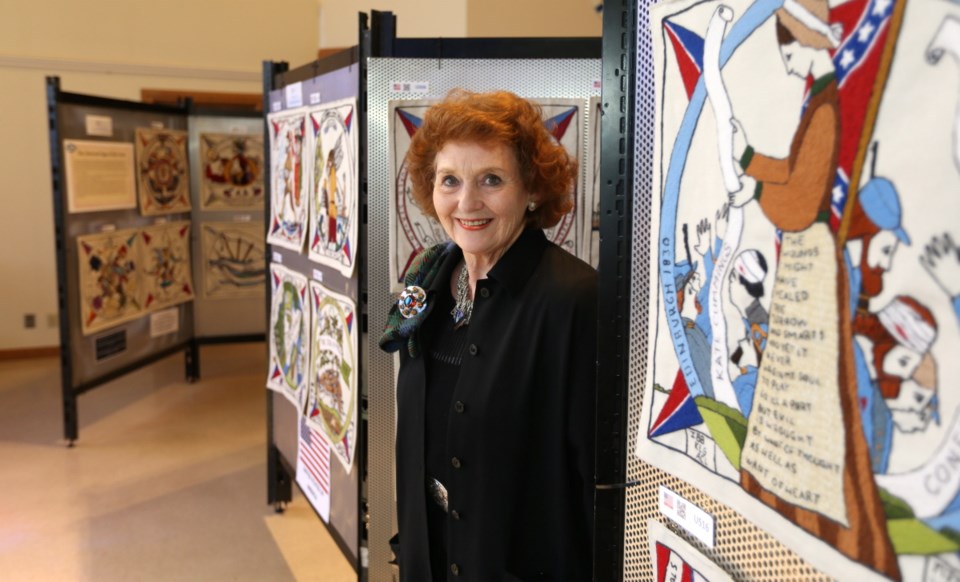A collection of 300 embroidered panels stitched in 34 countries that depict the lives of Scots beyond Scotland is on display in Victoria.
Each panel is 50 centimetres square, and Canada is well represented: four panels from B.C. were stitched by embroiderers from Victoria.
The B.C. panels depict explorer Simon Fraser, governor Sir James Douglas, Vancouver Island coal baron Robert Dunsmuir and educator and Arctic explorer Agnes Dean Cameron, the first female principal in Victoria.
Ideas for the panels were researched by Scottish associations around the world and the subject material sent to Scotland, where a graphic artist turned the idea into an outlined drawing. That was then sent back with a square of Scottish linen and a selection of wool to be embroidered into the picture.
The Scottish Diaspora Tapestry can be seen until May 30 at Christ Church Cathedral on Quadra Street.
Jenny Bruce, an artist/historian from John o’ Groats in northern Scotland who is travelling with the tapestry exhibit, said the show is an homage to the strength, endurance and curiosity of Scottish people who went to live all over the world.
“In this exhibit, we’ve got explorers, we’ve got engineers, we’ve got doctors and we have got people who climbed mountains,” said Bruce. “And we’ve got some personal stories, which are some of the most memorable, that show the determination to cope when people migrated.”
Bruce said the Scots who went abroad are to be commended for hanging onto their culture and identity. Scottish music, literature and art persevered and in many cases blended with local cultures.
Bruce said she recalled an Indian visitor to the tapestries strolling past and suddenly saying aloud: “My love is like a red, red rose.” It’s the first line of a poem by Robert (Robbie) Burns, the great poet and lyricist of Scotland.
When Bruce asked the man why he had said such a thing, the man pointed to a line of Punjabi script and said it was written there.
Bruce said the panel with the Burns line depicts a Sikh man in a turban wearing a tartan that was specifically designed for Sikhs. But she had no idea what was written in the script until the visitor deciphered it.
“No matter where the Scots went, they brought their culture with them,” said Bruce. “So this exhibit is depicting small nuggets of history.”
Barbara Gilbert, a retired teacher living in Victoria, was one of the embroiderers who worked on the four B.C. panels.
She said the panels took her and other embroiderers in Victoria two months to complete.
The final exhibit impressed her.
“It amazes me how many different tartans there are in all these pictures,” said Gilbert.
For more information on the Scottish Diaspora Tapestry, go to christchurchcathederal.bc.ca.
